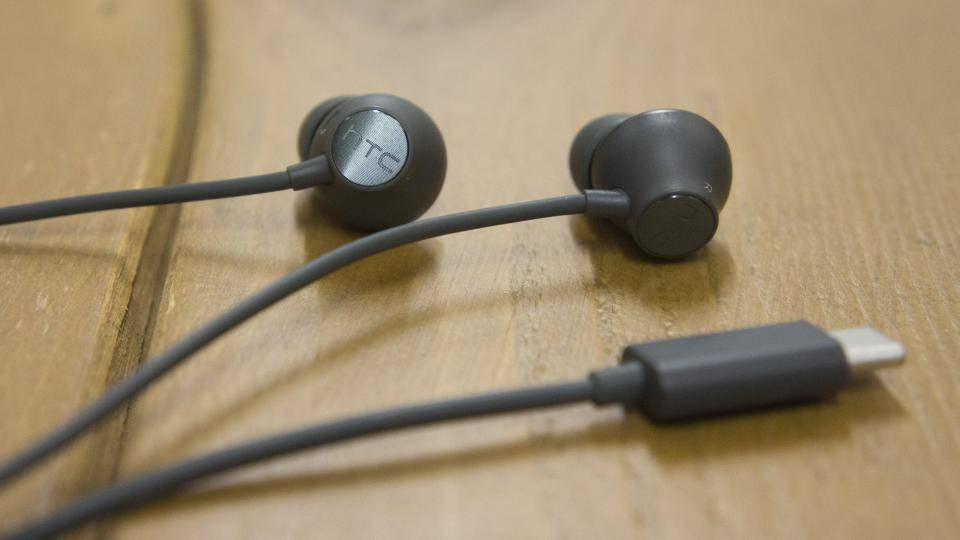HTC’s 10 Evo is nothing short of a repackaged HTC 10 . On the inside and out, it’s more or less identical. It has the same basic design, it’s powered by the same Snapdragon 810 processor and its 5.5in QHD screen is exactly the same size and resolution. So why should you give it the time of day?
Think of the Evo as a version 2.0 of sorts, sticking with the familiar all-metal premium build of the 10, with its bold chamfered edges and slick lines, but ditching the curved back of its predecessor. A convex back may be a little easier on the hands but I much prefer a smartphone to sit flush against a desk.
HTC’s also done an Apple and ditched the 3.5mm headphone jack. Sticking solely to a USB-C connection, you’ll no longer be able to listen to music through headphones and charge at the same time. As with the HTC 10, you’ll find a fingerprint scanner on the front that does double duties as a touch-sensitive button, perfect for both Google Now and Android Pay. And, with an IP57 rating, the HTC 10 Evo should fare better against water than its IP53-rated elder.
To help ease the blow of losing the headphone jack, the 10 Evo launches with adaptive in-ear headphones in the box. These USB-C powered Hi-Res headphones have a fancy sonar-based sensor which assesses how good your hearing is on the fly and adjusts the equalizer. It told me my left ear isn’t quite as good as my right, something I should probably get checked out.
The 12-megapixel rear camera of the original 10 has also been abandoned in favour of a 16-megapixel f/2.0 wide-angle lens. It still has 4K video recording, phase-detection autofocus, RAW support and optical image stabilisation, though. Meanwhile, the 8-megapixel front-facing snapper has a new panoramic selfie mode and can now record video in Full HD.

Inside, you’ll find an octa-core Snapdragon 810 chip and 3GB of RAM, the same used in its flagship brother. The year-old 2GHz processor is still pretty snappy, though, especially since HTC claims it’s re-engineered it to improve thermal efficiency. As for storage, the Evo comes with 32GB onboard with the option to expand up to an extra 128GB via microSD.
There’s a 3,200mAh battery inside, up from the HTC 10’s 3,000mAh capacity. Considering the HTC 10 lasted just over 12 hours in our battery tests, I’d expect the Evo to last a little longer, especially with its more power-efficient processor upgrade. There’s also fast-charging support, thanks to the USB-C port at the bottom, just like with the regular 10.

HTC doesn’t want to directly compete with its older flagship, but considering the 10 Evo is set to cost about the same as the HTC 10 is at the moment, it’s all but assured. From what I’ve seen, it’s going to be a very hard sell in the run up to Christmas, but I’ll bring you my full review once the HTC 10 Evo officially launches later this month.
|
Processor |
Octa-core 2.0GHz Qualcomm Snapdragon 810 |
|
RAM |
3GB |
|
Screen size |
5.5in |
|
Screen resolution |
2,560 x 1,440 |
|
Screen type |
Super LCD 3 |
|
Front camera |
8MP |
|
Rear camera |
16MP |
|
Flash |
Dual LED |
|
GPS |
Yes |
|
Compass |
Yes |
|
Storage (free) |
32GB |
|
Memory card slot (supplied) |
microSD |
|
Wi-Fi |
802.11 a/b/g/n/ac |
|
Bluetooth |
4.1 |
|
NFC |
Yes |
|
Wireless data |
4G, 3G |
|
Dimensions |
153.59 x 77.3 x 3.7-8.09mm |
|
Weight |
174g |


